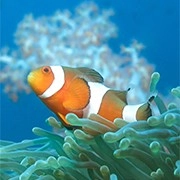Latte Art Evolution

Latte art refers to the combination of Italian espresso and steamed milk, where intricate patterns are created on the liquid surface through the fusion of these elements.
In the 1980s, while making lattes in his coffee cart in the United States, David Schomer accidentally poured steamed milk in a way that formed a heart shape on the coffee surface.
This serendipitous heart-shaped effect gained popularity among customers, prompting David to explore and develop the technique further. After achieving stability in creating heart shapes, he invented leaf patterns, and latte art started gaining attention in the coffee industry.
Latte art is now considered an essential skill for many baristas. It involves creating beautiful patterns on the coffee surface using finely frothed milk. What initially started with simple heart shapes has evolved into more intricate designs, including flowers, animals, and other complex patterns.
Ceramic art combines ancient craftsmanship and modern creativity and navigates a transformative journey.
Embark on a musical journey through the world's top piano masterpieces, each piece a timeless treasure.
Explore symmetrical aesthetics in architecture, from axial to mirror symmetry, reflecting cultural diversity and modern innovations.
Every artistic building is the product of careful design where aesthetics and mechanics come together.
The sunflower in full bloom is a vivid reflection of Van Gogh himself.
Rhythm: Beyond Notes, A Sonic Symphony Unleashed.
In 1992, David Schomer developed rose-shaped latte art and began conducting training sessions to popularize latte art. In Italy, Luigi Lupi, a renowned latte art pioneer, also exchanged videos with David online, contributing to improving their latte art skills.
As latte art progressed, world latte art competitions emerged, showcasing animal-themed patterns such as horses, owls, butterflies, and swans and even introducing coloured latte art. The focus shifted beyond the traditional combination of coffee oils and milk, turning latte art into a highly valued world competition. This trend attracted numerous coffee enthusiasts and significantly expanded the coffee industry's influence.
However, there is a downside to the current situation. Some baristas may spend 10 minutes creating intricate bear, cat, or bird latte art before serving the coffee to customers. While customers eagerly capture photos from all angles, the resulting drink may have a lower temperature, and the originally well-integrated froth may have risen to the surface, affecting the smooth texture that should accompany the beverage.
One frustrating aspect of latte art is that some baristas may prioritize visual aesthetics over the texture of the frothed milk. For example, receiving a cappuccino with a beautiful swan, heart, or clover latte art pattern but lacking the dense and velvety microfoam expected in a cappuccino can lead to disappointment. The ideal cappuccino should blend rich, velvety microfoam with hot milk and Italian espresso, providing a unique sensory experience.

Therefore, achieving a balance between visual appeal and taste is crucial. While beautiful latte art patterns represent countless hours of practice and dedication to delivering the best coffee experience – both in terms of flavour and aesthetics – it is essential to balance visual presentation and overall drink quality.
Of course, a beautiful latte art alone is not sufficient. It must be complemented by carefully handling green coffee beans, precise coffee roasting, and dedicated brewing processes to qualify as a genuinely perfect speciality coffee.

 · Art Team
· Art Team